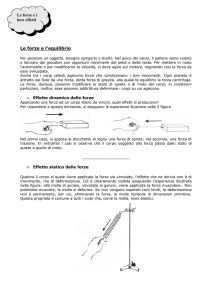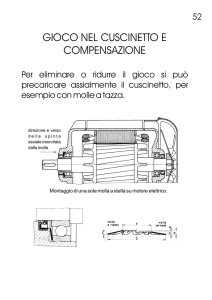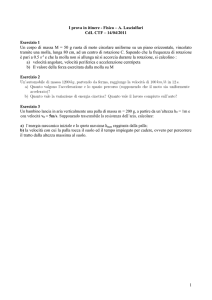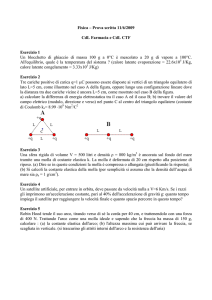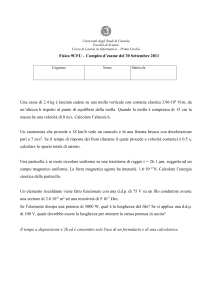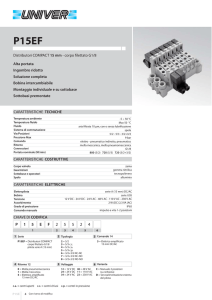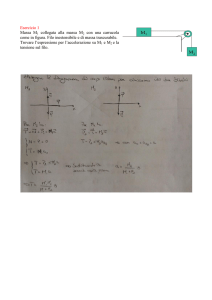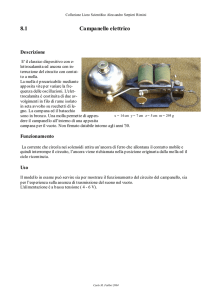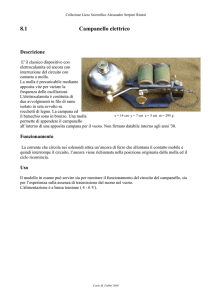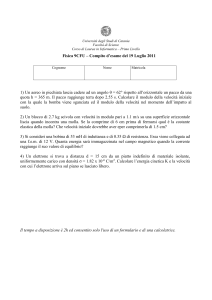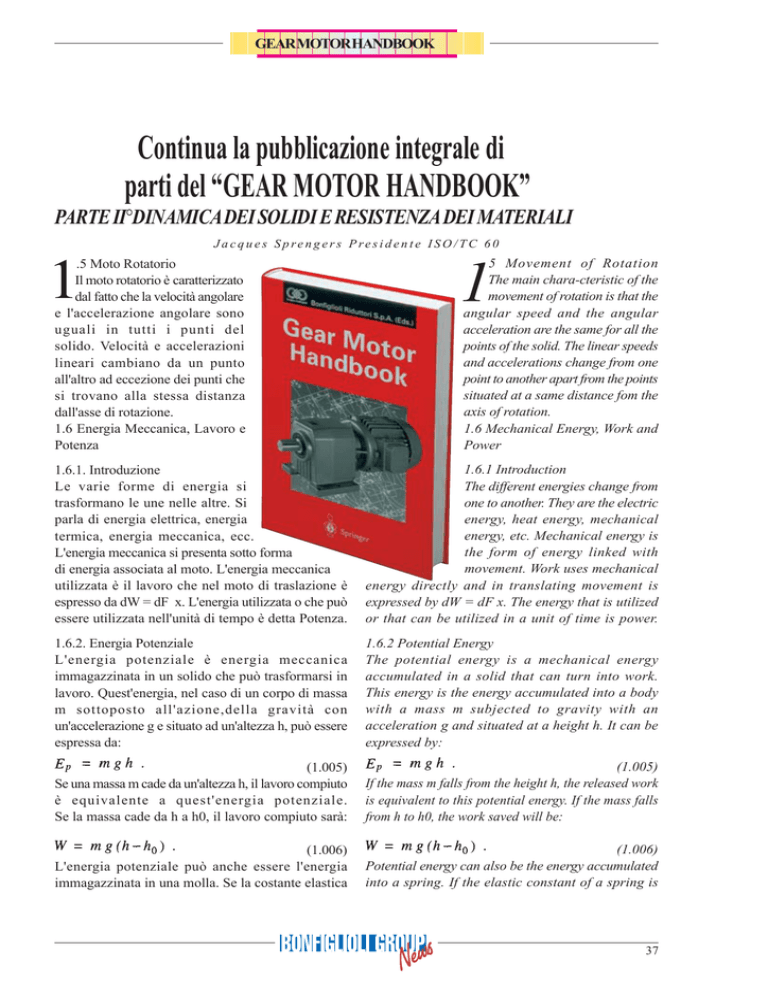
GEARMOTORHANDBOOK
Continua la pubblicazione integrale di
parti del “GEAR MOTOR HANDBOOK”
PARTE II°DINAMICA DEI SOLIDI E RESISTENZA DEI MATERIALI
J a c q u e s S p re n g e r s P re s i d e n t e I S O / T C 6 0
.5 Moto Rotatorio
Il moto rotatorio è caratterizzato
dal fatto che la velocità angolare
e l'accelerazione angolare sono
uguali in tutti i punti del
solido. Velocità e accelerazioni
lineari cambiano da un punto
all'altro ad eccezione dei punti che
si trovano alla stessa distanza
dall'asse di rotazione.
1.6 Energia Meccanica, Lavoro e
Potenza
5 Movement of Rotation
The main chara-cteristic of the
movement of rotation is that the
angular speed and the angular
acceleration are the same for all the
points of the solid. The linear speeds
and accelerations change from one
point to another apart from the points
situated at a same distance fom the
axis of rotation.
1.6 Mechanical Energy, Work and
Power
1.6.1. Introduzione
Le varie forme di energia si
trasformano le une nelle altre. Si
parla di energia elettrica, energia
termica, energia meccanica, ecc.
L'energia meccanica si presenta sotto forma
di energia associata al moto. L'energia meccanica
utilizzata è il lavoro che nel moto di traslazione è
espresso da dW = dF x. L'energia utilizzata o che può
essere utilizzata nell'unità di tempo è detta Potenza.
1.6.1 Introduction
The different energies change from
one to another. They are the electric
energy, heat energy, mechanical
energy, etc. Mechanical energy is
the form of energy linked with
movement. Work uses mechanical
energy directly and in translating movement is
expressed by dW = dF x. The energy that is utilized
or that can be utilized in a unit of time is power.
1.6.2. Energia Potenziale
L'energia potenziale è energia meccanica
immagazzinata in un solido che può trasformarsi in
lavoro. Quest'energia, nel caso di un corpo di massa
m sottoposto all'azione,della gravità con
un'accelerazione g e situato ad un'altezza h, può essere
espressa da:
1.6.2 Potential Energy
The potential energy is a mechanical energy
accumulated in a solid that can turn into work.
This energy is the energy accumulated into a body
with a mass m subjected to gravity with an
acceleration g and situated at a height h. It can be
expressed by:
(1.005)
Se una massa m cade da un'altezza h, il lavoro compiuto
è equivalente a quest'energia potenziale.
Se la massa cade da h a h0, il lavoro compiuto sarà:
(1.005)
If the mass m falls from the height h, the released work
is equivalent to this potential energy. If the mass falls
from h to h0, the work saved will be:
(1.006)
L'energia potenziale può anche essere l'energia
immagazzinata in una molla. Se la costante elastica
(1.006)
Potential energy can also be the energy accumulated
into a spring. If the elastic constant of a spring is
37
GEARMOTORHANDBOOK
defined by the ratio of
the force applied to this
spring divided by its
deformation, and if
this constant is
represented by c, the
deformed spring’s
energy will be given
by:
di una molla è definita
dal rapporto tra la forza
applicata alla molla e la
sua deformazione e se
questa costante è
rappresentata da c,
l'energia potenziale della
molla deformata sarà
data da:
(1.007)
dove l è la deformazione
della molla. Se la mollla
si estende da l a l0, l'energia meccanica immagazzinata
sarà:
(1.007)
l being the valve’s
deformation. If the
valve extends from l to l0, the mechanical energy
saved will be:
(1.008)
(1.008)
La costante elastica di una molla di torsione è data
dal rapporto tra la coppia applicata e la deformazione
che ne consegue.
L'energia potenziale sarà quindi data da:
The elastic constant of a spring stretched by a
movement of rotation is given by the relation between
the spring’s angular deformation and the torque
producing it. The potential energy will be given by:
(1.009)
(1.009)
se la costante è espressa da ct e la deformazione da
Se la deformazione passa da q a q0, il lavoro
immagazzinato sarà:
if the constant is expressed by ct and the deformation
by q. If the deformation changes from q to q0, the
work saved will be:
(1.010)
(1.010)
1.6.3. Energia Cinetica
L'energia cinetica è una energia meccanica associata
alla velocità. Si consideri una massa m che cade da
un'altezza h per effetto della gravità. La massa m
sarà sottoposta ad un'accelerazione g, mentre l'altezza
h sarà percorsa nel tempo t cosicché:
1.6.3 Kinetic Energy
Kinetic energy is a mechanical energy linked with
speed. Let us consider a mass m falling from a height
h under the action of gravity. The mass m will be
subjected to an acceleration g, the height h will be
covered in a time t so that:
(1.011)
(1.011)
e la velocità raggiunta sarà:
and the speed reached will be:
(1.012)
38
(1.012)
GEARMOTORHANDBOOK
Ne deriva che l'altezza h
espressa come funzione
della velocità sarà:
It follows that the height
h expressed as a function
of speed will be:
(1.013)
(1.013)
L'energia potenziale sarà
quindi data da:
The potential energy will
be given by:
(1.014)
(1.014)
Quest'energia, espressa in
funzione della velocità,
rappresenta l'energia cinetica equivalente all'energia
potenziale sviluppata.
Quindi:
This energy, expressed as
a function of the speed, is
the kinetic energy equiva
lent to the developed potential energy.
So:
(1.015)
(1.015)
Per il moto rotatorio ogni massa elementare del solido
che gira intorno all'asse di rotazione ad una assenza
r da esso, alla velocità angolare w, possiede velocità
lineare v = wr.
L'insieme delle masse elementari avrà qiundi
un'energia risultante dalla somma dell'energia di
ciascuna massa, ossia
For a movement of rotation, every elementary mass
of the solid turning around the rotating axis
at an angular speed w, is driven by a linear
speed n = wr.
The whole of the elementary masses will then have
an energy resulting from the sum of the energy of
each mass, i.e.
(1.016)
(1.016)
Essendo la velocità angolare la stessa per tutti i punti
del solido, si avrà:
The angular speed, being the same for all the points
of the solid, will give:
(1.017)
(1.017)
dove J ∆ è il momento di inerzia assiale (vedi
equazione 1.039)
where J∆ is the moment of inertia (see equation
1.039)
39

